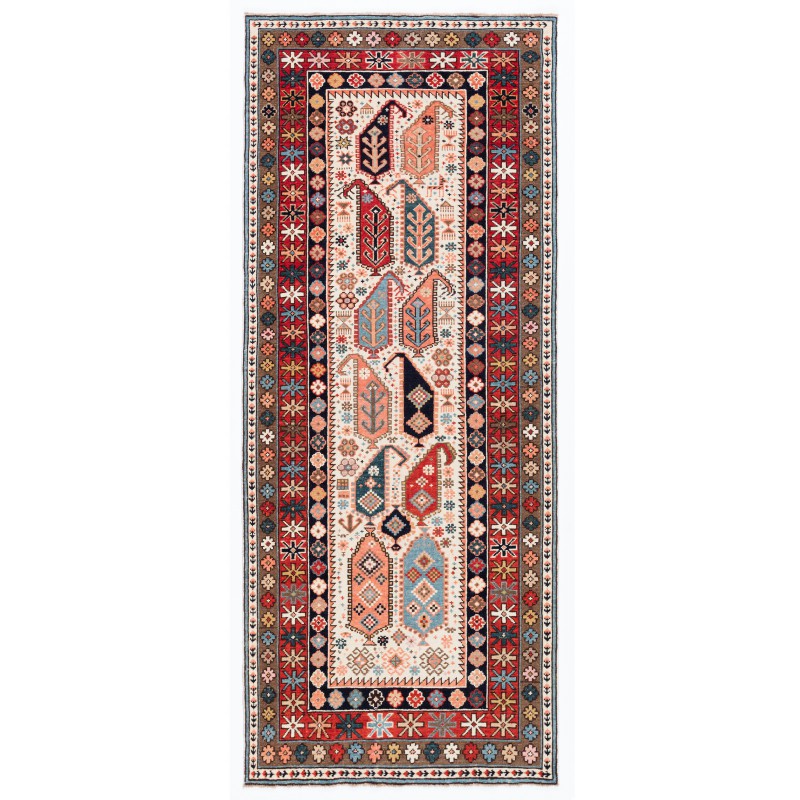
- Stock: 売り切れ
- Reward Points: 47600
- Model: C28049
- サイズ: 81cm x 196cm
この絨毯の情報は、Ian Bennettによる著書『Oriental Rugs Volume 1 Caucasian』(Oriental Textile Press、Aberdeen、1993年、pg.114)からのものです。これはカフカス地域のカラバフ・カザク地域で作られた19世紀後半のボテ(花形)の列デザインの絨毯です。ボテの対角線の列を持つ絨毯は、カフカスとペルシャ全域で見られます。カフカス自体では、最もよく知られているボテ絨毯は、中東沿岸部のバク地区のもので、特にボテヒラとして知られるグループがあります。このデザインは、バク地区のサリアニの絨毯やゲンジェ、他のいくつかのカフカスの絨毯でも見られます。ただし、カラバフの織物には特徴的な甘いピンク色がいくつか見られることに注意してください。バク/サリアニの絨毯は、ほとんどのカラバフの作品と異なり、綿または混合ウールと綿の経糸を使用しています。この絨毯は、フィールドに花の組成で覆われたボテの列を持ち、一連のボーダーで囲まれています。この絨毯のデザインは、私たちのデザイナーによって解釈され、柔らかな色彩が選ばれています。
The source of the rug comes from the book Oriental Rugs Volume 1 Caucasian, Ian Bennett, Oriental Textile Press, Aberdeen 1993, pg.114. This is a boteh rows design rug from the late 19th century, Karabagh Kazak region, Caucasus area. Rugs with diagonal rows of boteh can be found throughout the Caucasus and Persia. In the Caucasus itself, the best-known boteh rugs are from the Baku district in the central east coastal area, one particular group of which is known as boteh-hila in the carpet trade. This design is found also in Saliani pieces from the Baku district, Gendje, and some other Caucasian rugs. However, we should note the somewhat sugary pink, which is a particular feature of many Karabagh weavings. Baku/Saliani rugs differ from most Karabagh pieces in having a cotton or mixed wool and cotton wefts. This rug has rows of botehs covered with floral composition in the field and is framed with a series of borders. The design of the rug is interpreted by our designers, and soft colors are chosen for this rug.
